Iv been using SX now for a fair few weeks and its occured to me that i havent been putting in as much as im getting out of it. So I have decided to start a review thread to help out all gamers who are quite rightly cautious with their money. I will be adding other peoples reviews to it as times goes on (obviously with their permission). Also some parts of this may seem slightly patronising to more advanced users but i want it be useful for everyone 
Also, please feel free to add your own reviews of graphic cards
Right, enough chitchat, lets get down to the cards:
Asus V9999/TD 6800 128MB AGP cost:£105 inc Vat :
tested on:
1GB dual channel OCZ pc3200
AMD XP Athlon 3200+ @ 2.35 GHz
MSI KT880 Detla
and lots of fans
I received this card recently from Ebuyer and im extremely pleased with it. The packaging was fairly excessive and was mostly empty space, but hey, who cares.
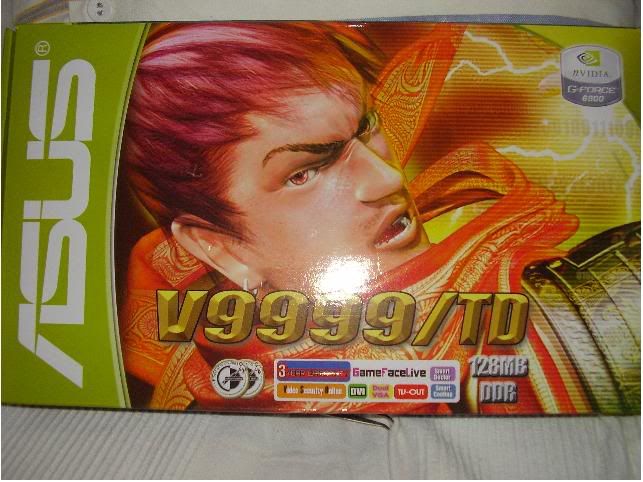
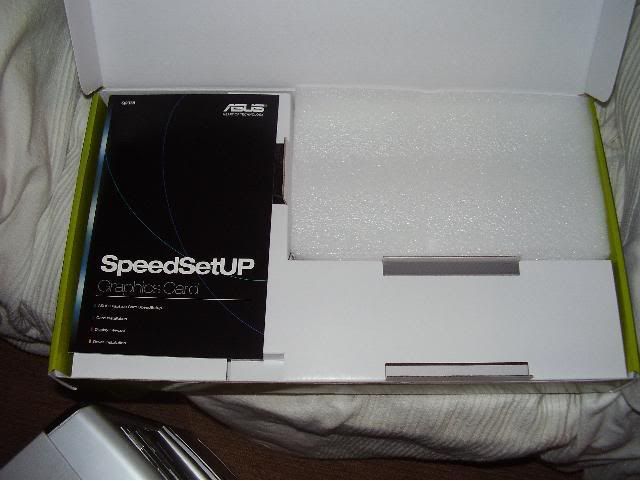
As you can see below, the card came with a fairly tifty little leather CD case, full with games and driver discs.
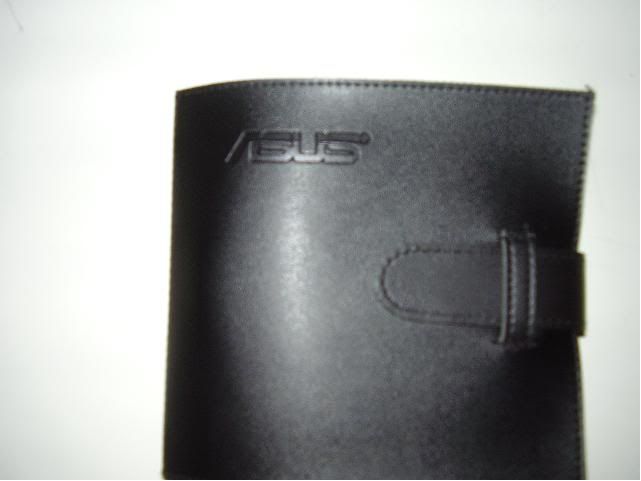
The manual is a little limited in its instructions so if this is a first time GC installation i suggest you seek reference on how to do it safely elsewhere on this site. My first impression of the card itself was 'good god thats big' and on closer inspection.... yep still massive. This did make Installing it pretty tricky, plus the molex power connection is on the underside, so ensure you have a cable that will reach.
The card is currently in my machine, and im in no mood to go through the hastle of removing it for a photo so these will have to do:
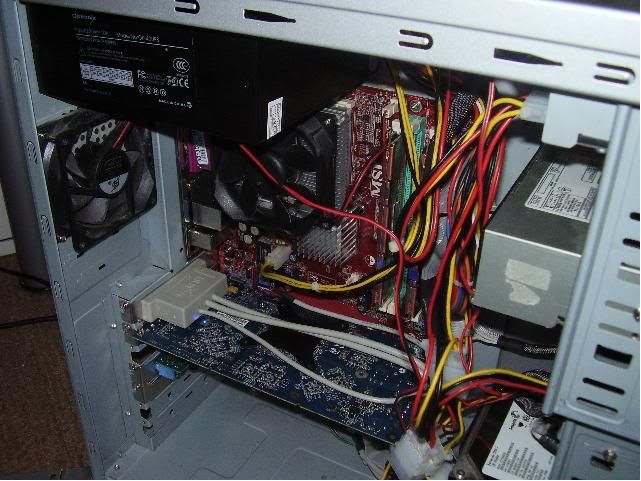
Note my customised heatsink (the fan i put on there is from an old HP and can actually move itself with the amount of air it shifts )
)
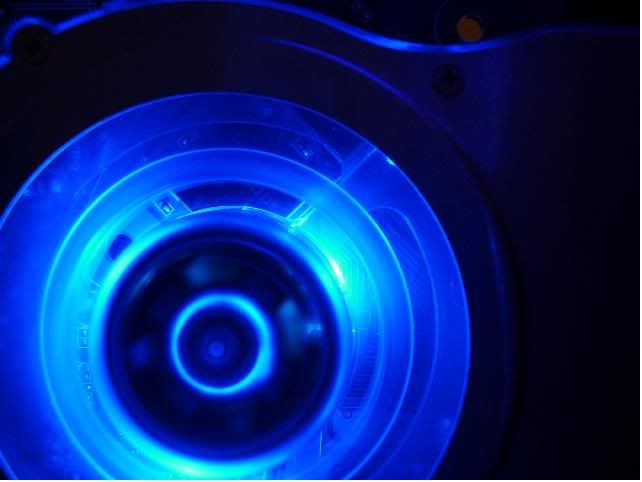
The fan you see above kicks out quite a bit of air, but also noise, lots of noise, which has pushed me to saving for a new cooler.
So thats the aesthetics side of it, now for the tech side.
Interface: AGP
Memory:128MB
Clock speed: 325MHz
Memory clock: 700MHz DDR
GPU Chip: NV40
Pixel Pipelines: 12 (unlocks to 16)
Vertex Shaders: 5 (unlocks to 6)
Shader: 3
Pixel / Textel fill rate: 5184 Mpixels/s
Bus width: 256bit
Idle Temp: 43*C
Load Temp: 55*C
(NB: Only the AGPs NV40 chip unlocks to 16/6, not the PCI-E version)
3Dmark 03 stock (at my game settings): 10370
3Dmark 03 unlocked (at my game settings): 11981
Steam stress test: 130 fps on high settings
The card works best with Nvidias latest forceware, Asus' drivers didnt quite cut it. The card also comes with a cool little utility called Asus smartdoctor, which monitor fan speed, temps, voltages and allows you to adjust clock and mem speeds although i wouldnt take it higher than 350/750 on stock cooling.
Overall, this is a great card for the money and with some tuning and extra cooling could quite probably provide the same as a £200+ card
PNY GeForce 6200 AGP 256MB cost: £50 ish:
(Run on pretty much the same rig above)
This was my first relatively capable graphics card, I got it a good few months ago now so unfortunately i have no pictures of the packaging or anything of the likes. The card itself is very compact and would be ideal for a small portable rig / media center / starting PC.

The passive heatsink you can see above is amazingly effective when air is put across it. I had it running at below 27*C idle and 35 to 40*C load and that was with a substantial overclock.
On the topic of overclocking, this is NOT and easy card to overclock if your new to the process. If you do decide to overclock it you will need the LATEST version of NiBiTor bios editor and NVflash flash utility, then seek a guide on bios flashing
Specs:
Interface: AGP
Memory: 256MB
Clock speed: 350MHz (stable to about 430)
Memory clock: 400MHz DDR (stable to about 510)
GPU chip:NV44
Pixel Pipelines: 4 (the NV43 chip unlocks to 8)
Vertex Shaders: 3 or 4 (also locked)
Shader: 3
Idle temp: 31*C
Load temp: 45/50*C
3Dmark03 on 800x600 overclocked fully: 4000
Steam stress test: 50/60 (on low to medium setting)
(this card manages HDR quite easily)
overall, a very decent card again for the money, fully capable of running Counterstike: source and HL2. Like i said earlier, ideal for a first pc or budget pc.
Final note: yes, i am wearing gloves indoors, my PC lives next to a radiator (so naturally my room stays cold )
)
Saphire ATI X1600 PROcost: £100 By Ham:
It cost me about £95 posted from ebuyer UK.

This is box, nothing fancy, just a few centimeters bigger than the actual card. It also came with no game packs or software which isn't really a surprise for under £100.

The card itself (yes it’s resting on my knee). The HSF is small enough to only take up the PCI-E slot the card takes and isn't too bad. Keeping the card between 50 and 65ish.
Note above the capacitor there is an NTSC/PAL jumper. But nothing anywhere to tell u exactly which way to set it for what.
Standard Install procedure worked fine. Was a little worried about my weak PSU but I took my chances anyway and it’s not blown out yet. The PCI-E slot seamed to be a lot more card friendly than the AGP.
Card Specs
After a bit of digging I found them, none of my programs could identify the chip let alone give its specs.
* 12 pixel pipes
* 5 vertex pipes
* 4 texture units
* 4 ROPs
* 8 Zcompare units
* 128 max threads
* 500 MHz core clock
* 405 MHz memory clock (810DDR)
* 2.0 Gpixels/sec peak pixel fill rate
* 1,000 Mvertices/s peak throughput
* 128-bit memory interface
* 256 MB
From what I’ve read, these specs fall between the Geforce 6600GT and various versions of 6800. And on-paper wise, for the price, it’s a good buy.
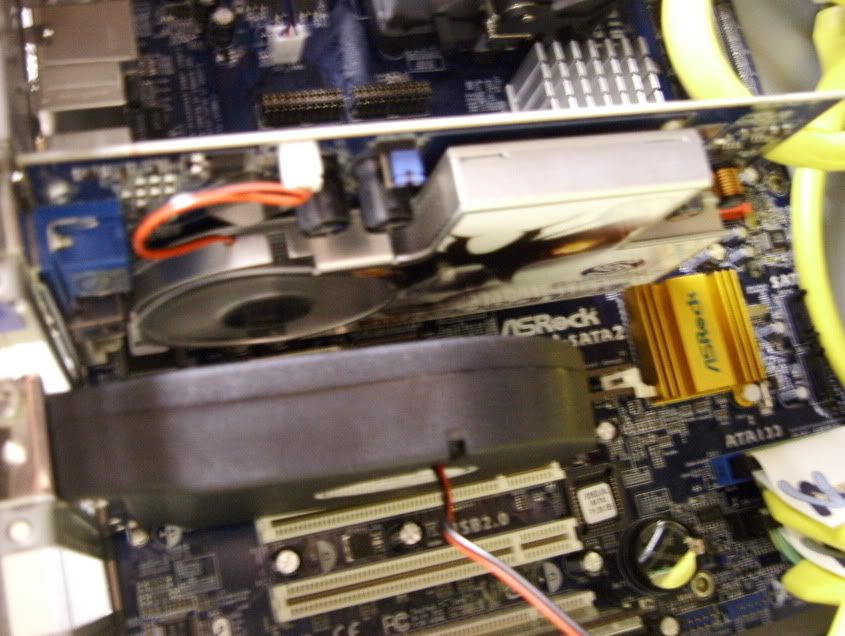
The card installed (makes my pc looks tidy lol)
The ATI catalyst drivers however aren't quite up to the nVidia forceware's standard. The catalyst control center is riddled with options, but not is very helpful on exactly what they do.
Benchmarks:
To run these I used the following:
AMD Athlon 64 3500+ (Newcastle)
1GB PC3200 Kingston Value Ram, 2x512 in dual.
ASRock 939Dual-SATA2
Maxtor 40GB ATA133 Boot drive
Seagate 120GB ATA100 Storage
3Dmark03 (800X600, all low) 8880
These settings were used on my 5700, as it was...well...crap. Also this mark was only taken with 512mB of ram.
3Dmark03 (defaults) 6870
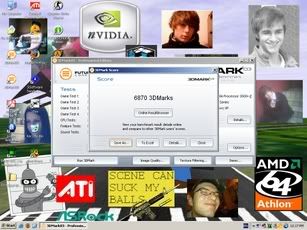
3Dmark05 (defaults) 3774

CS:S (800X600 dust_2, 9 bots) 80-150fps
CS:S (1024X768, dust_2, SX dust server) 100ishfps
CS:S Stress test 130

HL2 (1024X768, Max levels (other than AA, AF and HDR) 80(ish)FPS (constant)
HL2: lost coast (everything bar AA and AF maxed, inc. HDR) skipped around the 30fps mark
Thoughts
Having forked out for this card I can say it was worth the money. It’s a powerful midrange card that’s got plenty of bang per buck. Despite ATIs slightly disappointing drivers. At the resolutions my crappy monitor can handle it plows through most games with relative ease. I’m reluctant to test its overclockability due to the fact if I fry it, there’s no way in hell I can get a new one until next xmas .
Pros:
* Cheap
* Reasonably powerful
* Only takes up one Slot
* Has a VGA port for those of us with senile monitors
Cons:
* Drivers aren’t wonderful
* Seams to get VERY hot during a 3D render
* No diagnostic programs recognize it
Cheers
Ham
Also, please feel free to add your own reviews of graphic cards
Right, enough chitchat, lets get down to the cards:
Asus V9999/TD 6800 128MB AGP cost:£105 inc Vat :
tested on:
1GB dual channel OCZ pc3200
AMD XP Athlon 3200+ @ 2.35 GHz
MSI KT880 Detla
and lots of fans
I received this card recently from Ebuyer and im extremely pleased with it. The packaging was fairly excessive and was mostly empty space, but hey, who cares.


As you can see below, the card came with a fairly tifty little leather CD case, full with games and driver discs.

The manual is a little limited in its instructions so if this is a first time GC installation i suggest you seek reference on how to do it safely elsewhere on this site. My first impression of the card itself was 'good god thats big' and on closer inspection.... yep still massive. This did make Installing it pretty tricky, plus the molex power connection is on the underside, so ensure you have a cable that will reach.
The card is currently in my machine, and im in no mood to go through the hastle of removing it for a photo so these will have to do:

Note my customised heatsink (the fan i put on there is from an old HP and can actually move itself with the amount of air it shifts

The fan you see above kicks out quite a bit of air, but also noise, lots of noise, which has pushed me to saving for a new cooler.
So thats the aesthetics side of it, now for the tech side.
Interface: AGP
Memory:128MB
Clock speed: 325MHz
Memory clock: 700MHz DDR
GPU Chip: NV40
Pixel Pipelines: 12 (unlocks to 16)
Vertex Shaders: 5 (unlocks to 6)
Shader: 3
Pixel / Textel fill rate: 5184 Mpixels/s
Bus width: 256bit
Idle Temp: 43*C
Load Temp: 55*C
(NB: Only the AGPs NV40 chip unlocks to 16/6, not the PCI-E version)
3Dmark 03 stock (at my game settings): 10370
3Dmark 03 unlocked (at my game settings): 11981
Steam stress test: 130 fps on high settings
The card works best with Nvidias latest forceware, Asus' drivers didnt quite cut it. The card also comes with a cool little utility called Asus smartdoctor, which monitor fan speed, temps, voltages and allows you to adjust clock and mem speeds although i wouldnt take it higher than 350/750 on stock cooling.
Overall, this is a great card for the money and with some tuning and extra cooling could quite probably provide the same as a £200+ card
PNY GeForce 6200 AGP 256MB cost: £50 ish:
(Run on pretty much the same rig above)
This was my first relatively capable graphics card, I got it a good few months ago now so unfortunately i have no pictures of the packaging or anything of the likes. The card itself is very compact and would be ideal for a small portable rig / media center / starting PC.

The passive heatsink you can see above is amazingly effective when air is put across it. I had it running at below 27*C idle and 35 to 40*C load and that was with a substantial overclock.
On the topic of overclocking, this is NOT and easy card to overclock if your new to the process. If you do decide to overclock it you will need the LATEST version of NiBiTor bios editor and NVflash flash utility, then seek a guide on bios flashing
Specs:
Interface: AGP
Memory: 256MB
Clock speed: 350MHz (stable to about 430)
Memory clock: 400MHz DDR (stable to about 510)
GPU chip:NV44
Pixel Pipelines: 4 (the NV43 chip unlocks to 8)
Vertex Shaders: 3 or 4 (also locked)
Shader: 3
Idle temp: 31*C
Load temp: 45/50*C
3Dmark03 on 800x600 overclocked fully: 4000
Steam stress test: 50/60 (on low to medium setting)
(this card manages HDR quite easily)
overall, a very decent card again for the money, fully capable of running Counterstike: source and HL2. Like i said earlier, ideal for a first pc or budget pc.
Final note: yes, i am wearing gloves indoors, my PC lives next to a radiator (so naturally my room stays cold
Saphire ATI X1600 PROcost: £100 By Ham:
It cost me about £95 posted from ebuyer UK.

This is box, nothing fancy, just a few centimeters bigger than the actual card. It also came with no game packs or software which isn't really a surprise for under £100.

The card itself (yes it’s resting on my knee). The HSF is small enough to only take up the PCI-E slot the card takes and isn't too bad. Keeping the card between 50 and 65ish.
Note above the capacitor there is an NTSC/PAL jumper. But nothing anywhere to tell u exactly which way to set it for what.
Standard Install procedure worked fine. Was a little worried about my weak PSU but I took my chances anyway and it’s not blown out yet. The PCI-E slot seamed to be a lot more card friendly than the AGP.
Card Specs
After a bit of digging I found them, none of my programs could identify the chip let alone give its specs.
* 12 pixel pipes
* 5 vertex pipes
* 4 texture units
* 4 ROPs
* 8 Zcompare units
* 128 max threads
* 500 MHz core clock
* 405 MHz memory clock (810DDR)
* 2.0 Gpixels/sec peak pixel fill rate
* 1,000 Mvertices/s peak throughput
* 128-bit memory interface
* 256 MB
From what I’ve read, these specs fall between the Geforce 6600GT and various versions of 6800. And on-paper wise, for the price, it’s a good buy.

The card installed (makes my pc looks tidy lol)
The ATI catalyst drivers however aren't quite up to the nVidia forceware's standard. The catalyst control center is riddled with options, but not is very helpful on exactly what they do.
Benchmarks:
To run these I used the following:
AMD Athlon 64 3500+ (Newcastle)
1GB PC3200 Kingston Value Ram, 2x512 in dual.
ASRock 939Dual-SATA2
Maxtor 40GB ATA133 Boot drive
Seagate 120GB ATA100 Storage
3Dmark03 (800X600, all low) 8880
These settings were used on my 5700, as it was...well...crap. Also this mark was only taken with 512mB of ram.
3Dmark03 (defaults) 6870

3Dmark05 (defaults) 3774

CS:S (800X600 dust_2, 9 bots) 80-150fps
CS:S (1024X768, dust_2, SX dust server) 100ishfps
CS:S Stress test 130

HL2 (1024X768, Max levels (other than AA, AF and HDR) 80(ish)FPS (constant)
HL2: lost coast (everything bar AA and AF maxed, inc. HDR) skipped around the 30fps mark
Thoughts
Having forked out for this card I can say it was worth the money. It’s a powerful midrange card that’s got plenty of bang per buck. Despite ATIs slightly disappointing drivers. At the resolutions my crappy monitor can handle it plows through most games with relative ease. I’m reluctant to test its overclockability due to the fact if I fry it, there’s no way in hell I can get a new one until next xmas .
Pros:
* Cheap
* Reasonably powerful
* Only takes up one Slot
* Has a VGA port for those of us with senile monitors
Cons:
* Drivers aren’t wonderful
* Seams to get VERY hot during a 3D render
* No diagnostic programs recognize it
Cheers
Ham
